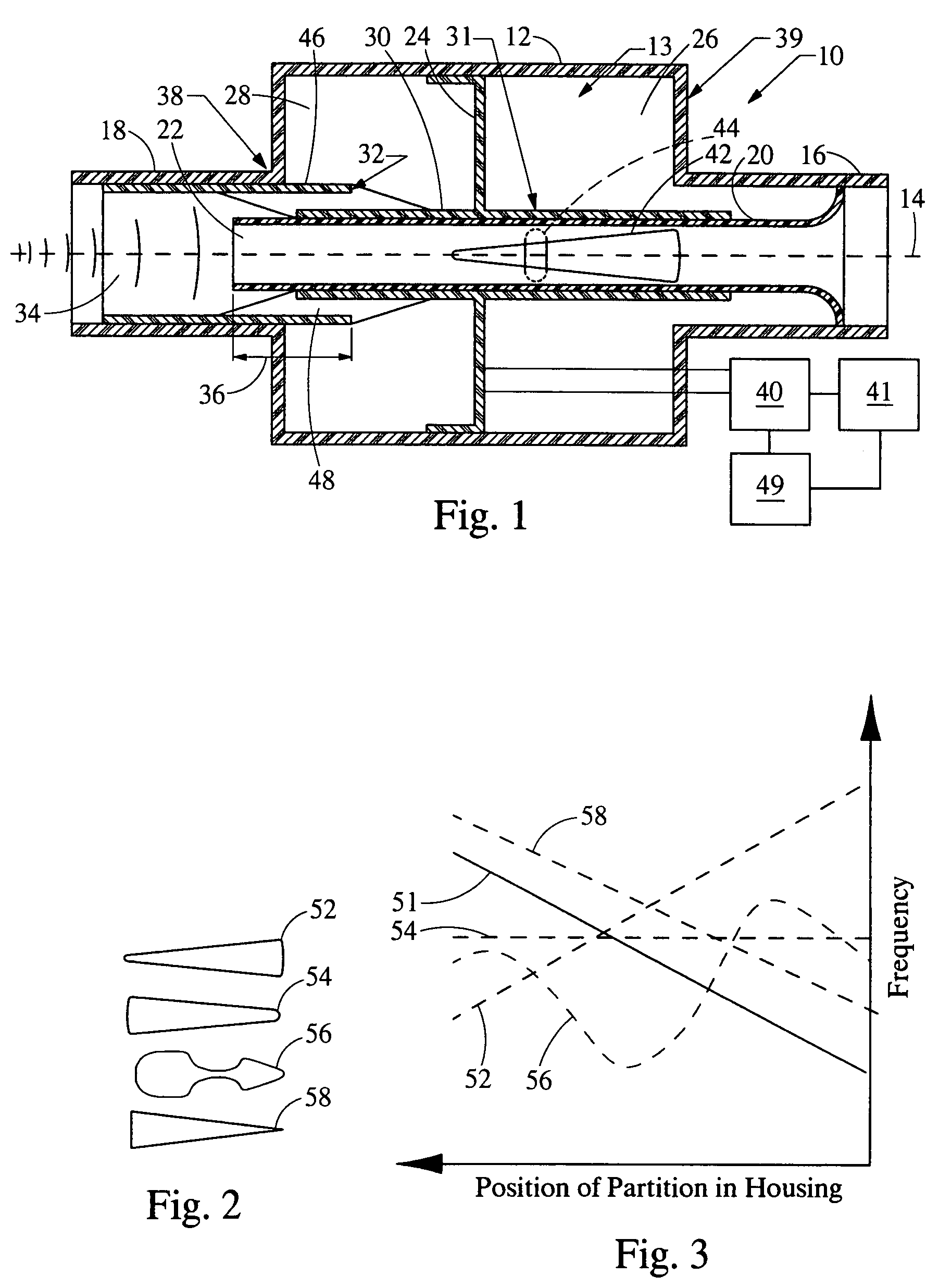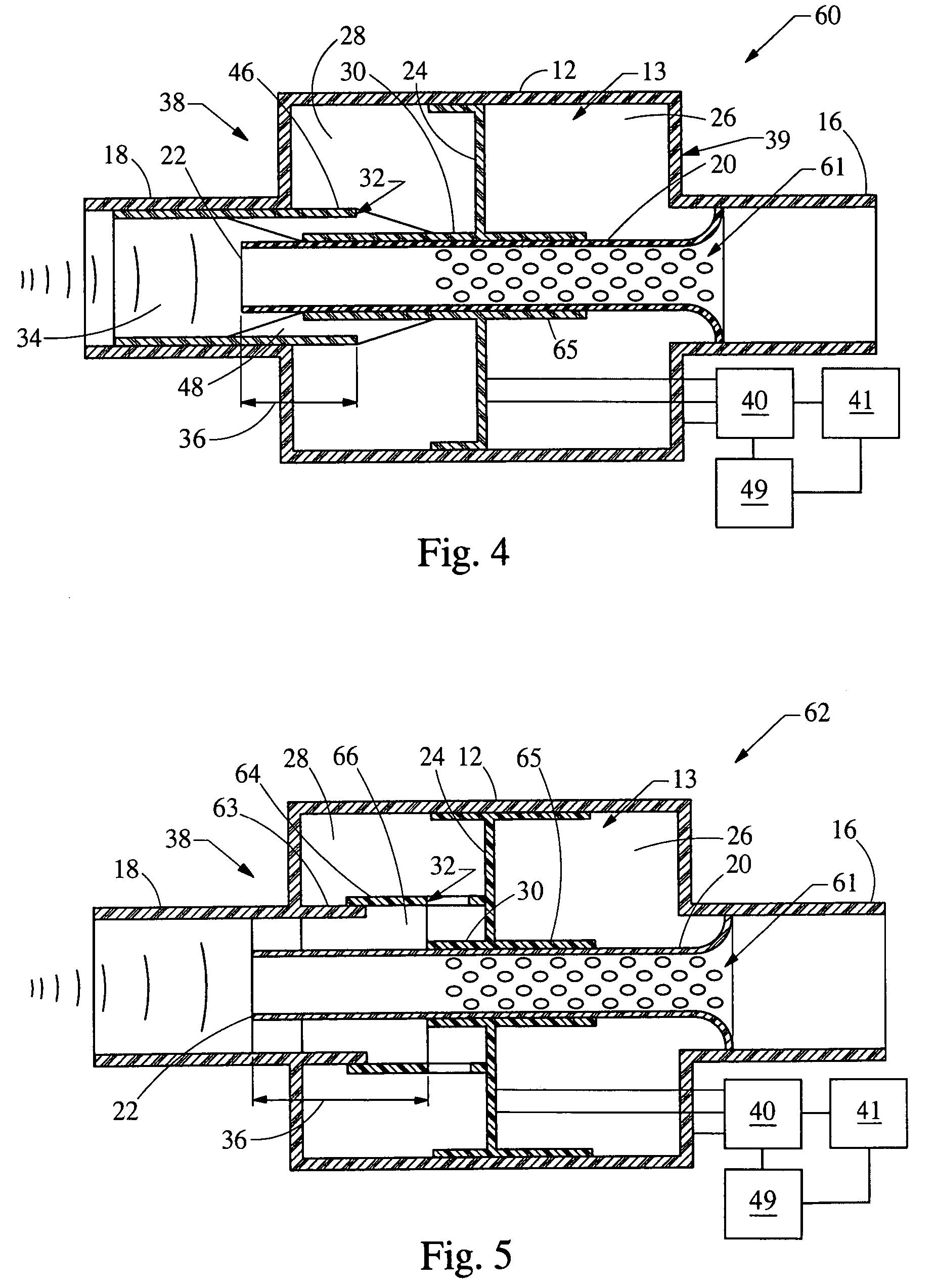Electronically controlled dual chamber variable resonator
a variable resonator, electric control technology, applied in the direction of combustion-air/fuel-air treatment, air cleaner and silencer combination, instruments, etc., can solve the problems of induction noise, induction noise, and inability to control multiple frequencies at the same engine speed,
- Summary
- Abstract
- Description
- Claims
- Application Information
AI Technical Summary
Benefits of technology
Problems solved by technology
Method used
Image
Examples
Embodiment Construction
[0021]Referring now to FIG. 1, an in-line resonator embodying the principles of the present invention is illustrated therein and designated at 10. As its primary components, the in-line resonator 10 includes a resonator housing 12, a conduit 20, a partition 24, a downstream sleeve 30, and an upstream sleeve 31.
[0022]The housing 12 of the in-line resonator 10 forms a compartment 13 having a fixed volume. Extending from the ends of the housing 12 are an upstream duct 16 and a downstream duct 18. Positioned axially within the in-line resonator 10 and providing an airflow passage from the upstream duct 16 to the downstream duct 18 is the conduit 20. The conduit 20 is centered on the axis 14 of the resonator housing 12 and air flows generally into the upstream duct 16, through the conduit 20, into the downstream duct 18, and to the internal combustion engine (not shown). Acoustic pressure pulsations created by the air induction process travel from the engine into the downstream duct 18.
[...
PUM
 Login to View More
Login to View More Abstract
Description
Claims
Application Information
 Login to View More
Login to View More - R&D
- Intellectual Property
- Life Sciences
- Materials
- Tech Scout
- Unparalleled Data Quality
- Higher Quality Content
- 60% Fewer Hallucinations
Browse by: Latest US Patents, China's latest patents, Technical Efficacy Thesaurus, Application Domain, Technology Topic, Popular Technical Reports.
© 2025 PatSnap. All rights reserved.Legal|Privacy policy|Modern Slavery Act Transparency Statement|Sitemap|About US| Contact US: help@patsnap.com



